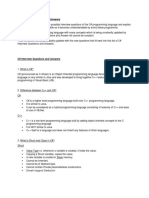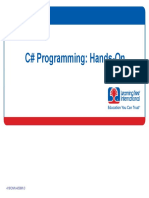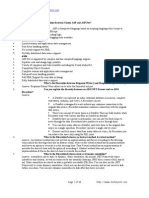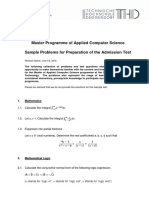0% found this document useful (0 votes)
128 views6 pagesDependency Injection for Developers
Dependency injection (DI) is a software design pattern that allows for loosely coupled code by enabling objects to access other objects without needing to know how they are implemented. DI involves a factory or builder object that is responsible for creating objects and injecting their dependencies. This allows classes to have their dependencies provided to them rather than having to find or create them. The primary advantages of DI are that it promotes loose coupling, centralized configuration, and testability. However, wiring together many dependencies can become complex. Common DI techniques include constructor injection, property injection, and method injection.
Uploaded by
Gourab SinghCopyright
© © All Rights Reserved
We take content rights seriously. If you suspect this is your content, claim it here.
Available Formats
Download as DOCX, PDF, TXT or read online on Scribd
0% found this document useful (0 votes)
128 views6 pagesDependency Injection for Developers
Dependency injection (DI) is a software design pattern that allows for loosely coupled code by enabling objects to access other objects without needing to know how they are implemented. DI involves a factory or builder object that is responsible for creating objects and injecting their dependencies. This allows classes to have their dependencies provided to them rather than having to find or create them. The primary advantages of DI are that it promotes loose coupling, centralized configuration, and testability. However, wiring together many dependencies can become complex. Common DI techniques include constructor injection, property injection, and method injection.
Uploaded by
Gourab SinghCopyright
© © All Rights Reserved
We take content rights seriously. If you suspect this is your content, claim it here.
Available Formats
Download as DOCX, PDF, TXT or read online on Scribd
/ 6

























































































